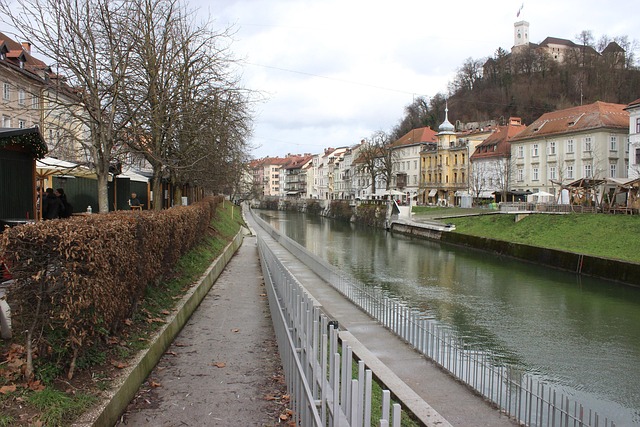In Karachi's Gulberg Town, persistent electricity load shedding disrupts daily life and businesses due to insufficient power generation, uneven distribution, and rising energy demands outpacing infrastructure upgrades. This issue peaks during load hours, causing scheduled or unscheduled power cuts that impact essential services like education and healthcare. To address these challenges, discussions are focused on enhancing power infrastructure through smart grid technology, diversifying energy sources with renewable options like solar power, promoting energy efficiency, and modernizing power plants.
“In Karachi’s bustling Gulberg Town, electricity load shedding has become an all too familiar rhythm, disrupting daily life and business operations. This article delves into the complex issue, exploring its causes—from infrastructure strain to peak demand—and assessing its profound impact on the local community. We analyze potential solutions, from smart grid technology to renewable energy integration, offering insights into the future prospects for consistent power supply in this vibrant Karachi neighborhood.”
- Understanding Electricity Load Shedding in Karachi's Gulberg Town
- Causes and Impacts on the Local Community
- Potential Solutions and Future Prospects for Consistent Power Supply
Understanding Electricity Load Shedding in Karachi's Gulberg Town

In Karachi’s bustling Gulberg Town, electricity load shedding has become an all too familiar routine for residents. This phenomenon refers to the temporary discontinuation of electricity supply to certain areas or regions due to a mismatch between demand and available generation capacity. During peak hours, when energy requirements surge, the local power distribution companies implement load shedding as a measure to prevent system overload and potential blackouts.
Karachi, being Pakistan’s economic hub, faces unique challenges in maintaining a stable electricity grid. Rapid urban growth and increasing energy demands have put immense pressure on the existing infrastructure. Load shedding not only disrupts daily routines but also impacts businesses and essential services. Understanding this issue is crucial for devising sustainable solutions, ensuring a reliable power supply, and improving the overall quality of life for the diverse population of Gulberg Town and beyond.
Causes and Impacts on the Local Community

In Karachi, particularly in areas like Gulberg Town, electricity load shedding has become a persistent issue, causing significant disruptions to daily life and local businesses. The primary causes include inadequate power generation capacity, uneven distribution of electrical resources, and rising energy demands outpacing infrastructure upgrades. During peak hours or times of high consumption, the existing grid struggles to meet the demand, leading to scheduled or unscheduled power cuts.
These power outages have far-reaching impacts on the local community. Residents face challenges in accessing basic amenities like lighting, cooling, and heating, affecting their comfort and quality of life. Businesses operating in Karachi’s commercial hubs, such as Gulberg Town, experience losses due to disrupted operations, especially those reliant on continuous power for manufacturing, retail, or service provision. Additionally, load shedding can hinder educational institutions and healthcare facilities, disrupting essential services and posing potential risks to public safety and well-being.
Potential Solutions and Future Prospects for Consistent Power Supply

The consistent electricity load shedding in Gulberg Town, Karachi, has sparked discussions on potential solutions to ensure a stable power supply for the city’s residents and businesses. One promising approach is the implementation of smart grid technology. By integrating advanced digital control systems, the energy distribution network can become more efficient, allowing for better monitoring, control, and management of electricity flows. This technology enables rapid detection and isolation of faults, reducing the frequency and duration of power outages.
Additionally, diversifying energy sources could significantly improve Karachi’s power scenario. The city has been heavily reliant on fossil fuels, which are not only environmentally detrimental but also subject to price fluctuations. Investing in renewable energy sources like solar and wind power can provide a sustainable and cost-effective alternative. Karachi’s sunny climate makes it particularly suitable for large-scale solar energy generation. Moreover, promoting energy efficiency through public awareness campaigns and implementing smart metering systems can further reduce electricity demand, easing the burden on the existing infrastructure. These measures, when combined with regular maintenance and modernization of power plants, hold great promise for a more reliable and consistent power supply in the future, not just for Gulberg Town but across Karachi.
Electricity load shedding in Gulberg Town, Karachi, has long been a challenging issue, impacting residents’ daily lives and the town’s overall development. This article has explored the causes, from infrastructure strain to peak demand, and highlighted the consequences on the local community. By examining potential solutions like smart grid technology and renewable energy integration, we can envision a future with consistent power supply for this vibrant Karachi neighborhood. Addressing these challenges is crucial for the town’s progress, ensuring residents enjoy reliable electricity while fostering economic growth.



